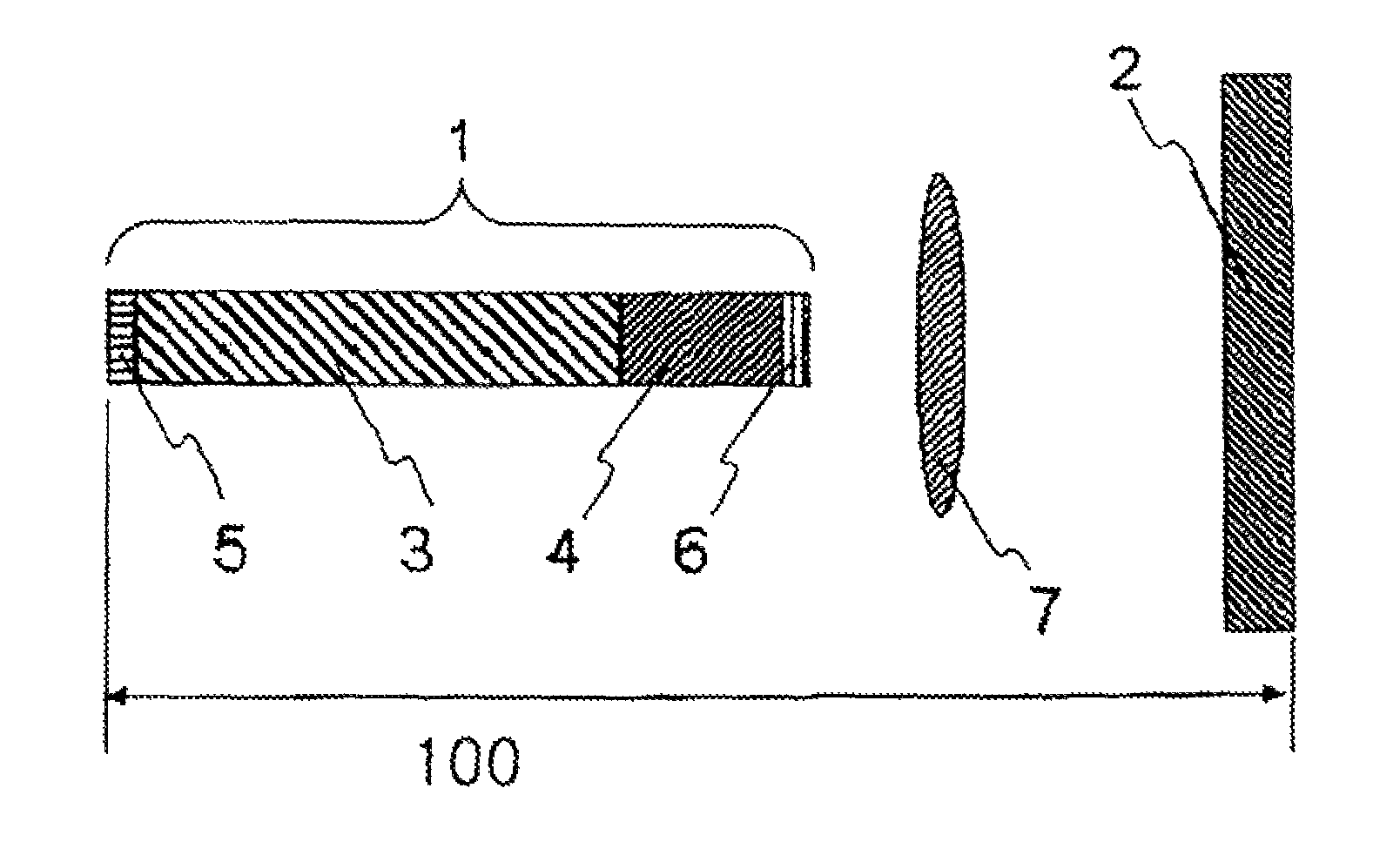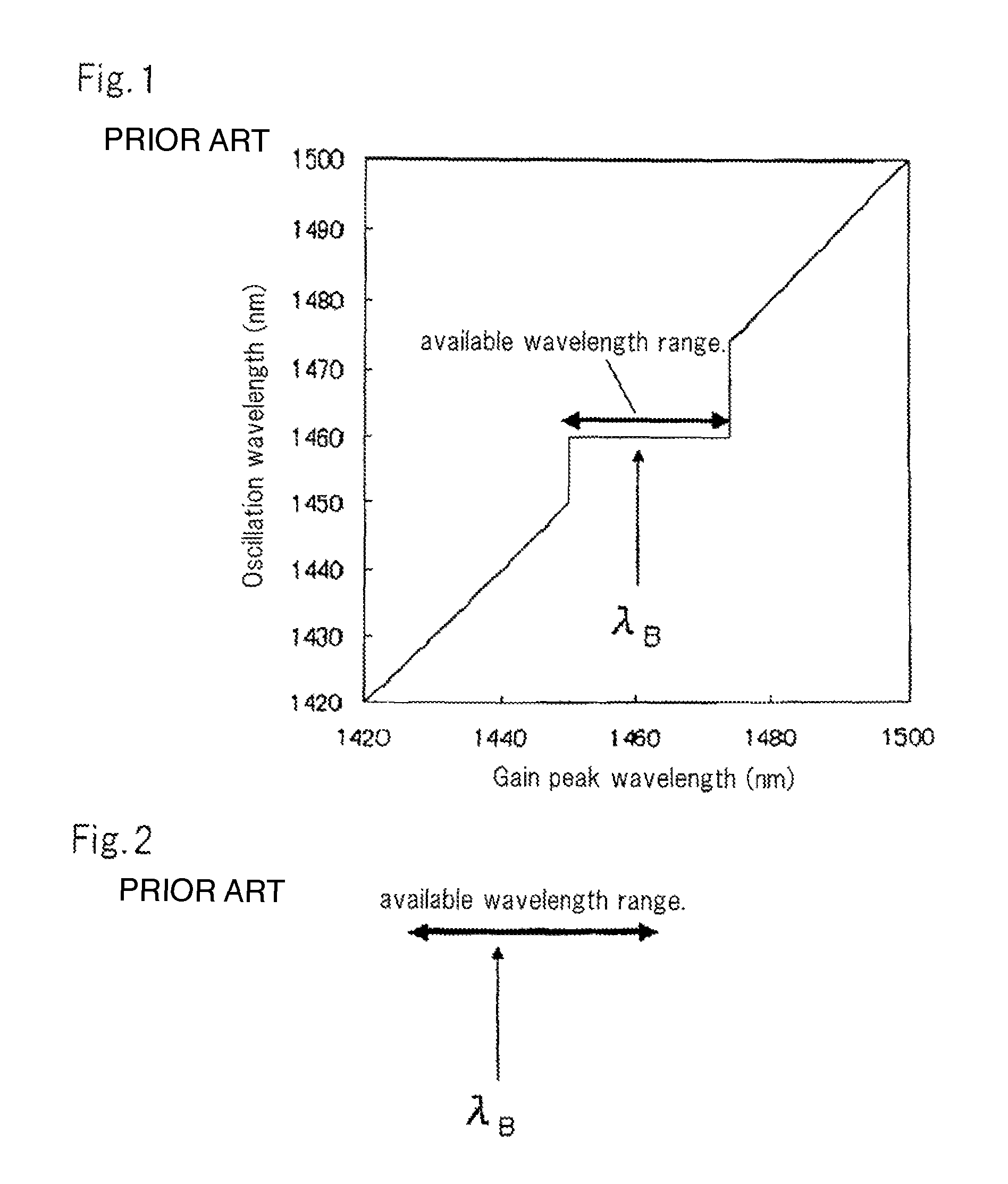External resonator-type wavelength tunable laser device
a laser device and external resonator technology, applied in semiconductor lasers, laser details, electrical equipment, etc., can solve the problems of increasing the number of laser elements arranged in parallel, increasing the loss of couplers, and increasing the need for inventory control
- Summary
- Abstract
- Description
- Claims
- Application Information
AI Technical Summary
Benefits of technology
Problems solved by technology
Method used
Image
Examples
first example
[0166]A first example will be described below with reference to the drawings.
[0167]FIG. 13 is a diagram showing the configuration of an external resonator-type wavelength tunable laser device corresponding to the first example. In FIG. 13, the same components as those described above are denoted by the same reference numerals.
[0168]The external resonator-type wavelength tunable laser device according to the first example comprises semiconductor element 1 including semiconductor optical amplifier 3, collimating lens 7, planar wavelength tunable filter 8, and wavelength tunable reflection mirror 12 with an operation range corresponding to the vicinity of the C band (between 1,530 nm and 1,570 nm). The reflectance difference ΔR of wavelength tunable reflection mirror 12 is 8 dB.
[0169]Semiconductor element 1 includes circuit forming semiconductor optical amplifier 3 and a circuit used as phase adjustment region 4; the circuits are monolithically integrated. This integration was carried ...
second example
[0182]A second example will be described below with reference to the drawings.
[0183]The configuration of an external resonator-type wavelength tunable laser device according to the second example is the same as that according to the first example (FIG. 13).
[0184]The external resonator-type wavelength tunable laser device according to the present example comprises semiconductor element 1 including semiconductor optical amplifier 3, collimating lens 7, planar wavelength tunable filter 8, and wavelength tunable reflection mirror 12 with an operation range that corresponds to the vicinity of the C band (between 1,530 nm and 1,570 nm). The reflectance difference ΔR of wavelength tunable reflection mirror 12 is 8 dB.
[0185]Semiconductor element 1 includes circuit forming semiconductor optical amplifier 3 and a circuit used as phase adjustment region 4; the circuits are monolithically integrated. This integration was carried out using the butt joint technique.
[0186]First, an MQW structure u...
third example
[0198]A third example will be described below with reference to the drawings.
[0199]The configuration of an external resonator-type wavelength tunable laser device according to the third example is the same as that according to the first example (FIG. 13).
[0200]The external resonator-type wavelength tunable laser device according to the present example comprises semiconductor element 1 including semiconductor optical amplifier 3, collimating lens 7, wavelength tunable filter 8, and wavelength tunable reflection mirror 12 with an operation range of about 1,565 nm and 1,615 nm. ΔR of wavelength tunable reflection mirror 12 is 16 dB.
[0201]Semiconductor element 1 includes a circuit forming semiconductor optical amplifier 3 and a circuit used as phase adjustment region 4; the circuits are monolithically integrated. This integration was carried out using the butt joint technique.
[0202]First, an MQW structure used as semiconductor optical amplifier 3 is grown. Six MQW layers (each well was ...
PUM
 Login to View More
Login to View More Abstract
Description
Claims
Application Information
 Login to View More
Login to View More - R&D
- Intellectual Property
- Life Sciences
- Materials
- Tech Scout
- Unparalleled Data Quality
- Higher Quality Content
- 60% Fewer Hallucinations
Browse by: Latest US Patents, China's latest patents, Technical Efficacy Thesaurus, Application Domain, Technology Topic, Popular Technical Reports.
© 2025 PatSnap. All rights reserved.Legal|Privacy policy|Modern Slavery Act Transparency Statement|Sitemap|About US| Contact US: help@patsnap.com



